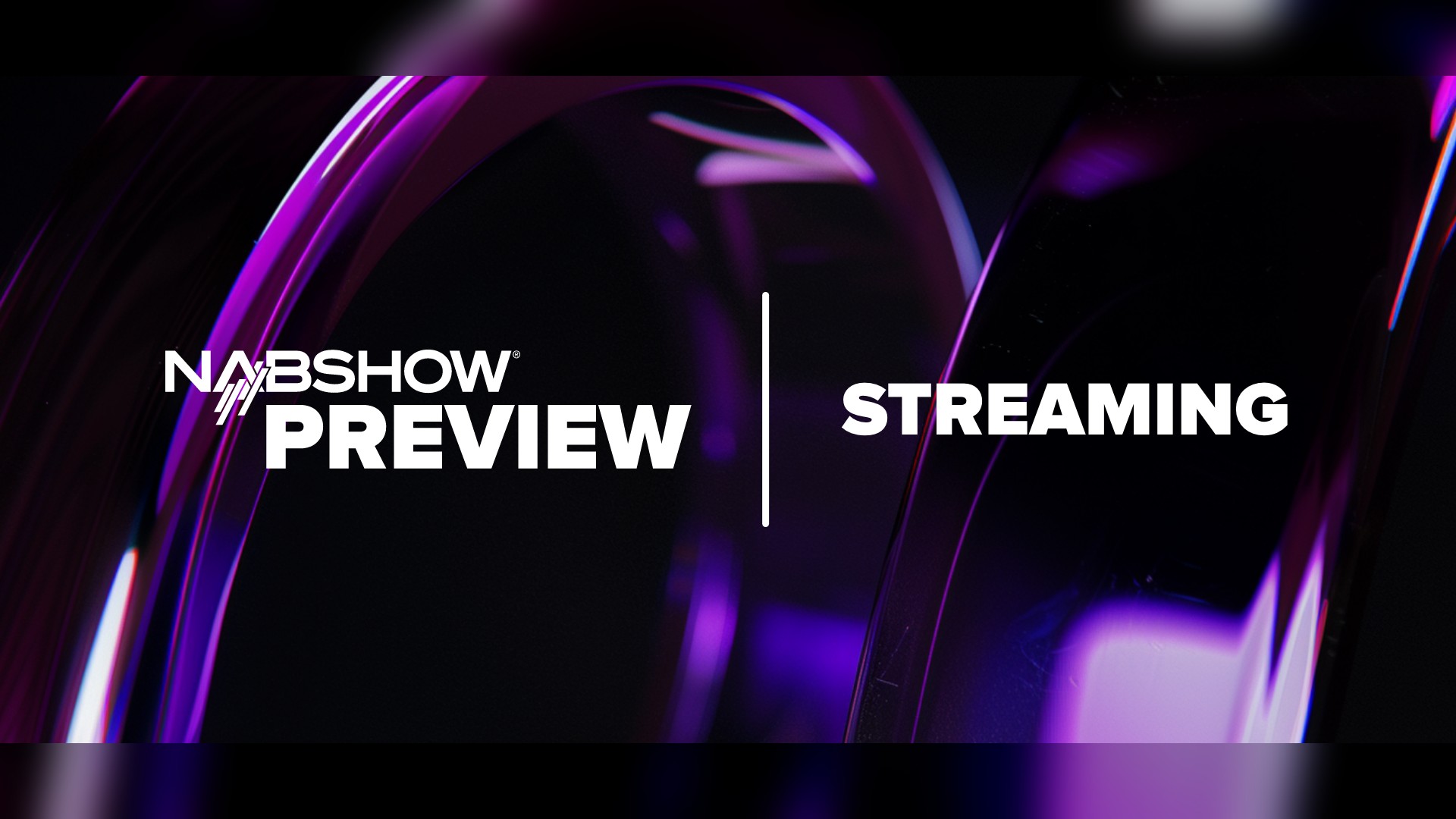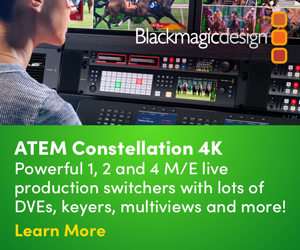NAB Show Preview: Streaming’s maturation brings new challenges and solutions for broadcasters

Subscribe to NewscastStudio for the latest news, project case studies and product announcements in broadcast technology, creative design and engineering delivered to your inbox.
From FAST channels to connected TV experiences, industry leaders are navigating a rapidly evolving landscape where traditional boundaries continue to blur.
Streaming continues to alter content creation, distribution and monetization – with the topic a key focus of this year’s NAB Show.
Economic advantages fuel channel expansion
The financial benefits of streaming distribution over traditional broadcasting have become increasingly compelling, opening doors for niche content providers who previously couldn’t afford market entry.
“The economic benefits of streaming distribution over traditional television broadcast continues to grow ever stronger. The dramatic reduction in individual TV channel distribution costs opens the opportunity for ever diverse and targeted interest channels including FAST and minority sports channels,” said Pete Blatchford, chief marketing officer at Starfish Technologies.
“We expect this to grow dramatically giving viewers unprecedented choice. The technology to support this growth is now mature and cost effective,” Blatchford added.
This accessibility extends beyond established media companies to include independent content creators.
“For content creators, the barriers to entry continue to fall. Not only are the means of creation ever more accessible, it is also now even easier to push content out to global audiences and earn direct revenues,” said James Gilbert, vice president of sales and marketing at Pixel Power, a Rohde & Schwarz company.
This is reflected in data from YouTube, which continues to show younger audiences switching to the platform and skipping traditional TV.
FAST continues to be a streaming favorite
Free ad-supported streaming television (FAST) continues to be a major focus for broadcasters and content owners looking to maximize content libraries while reaching new audiences.
Gilbert highlighted two primary roles for FAST channels: “exploiting existing catalogues to extend revenues, and to provide a platform for niche content – like lower tier or more unusual sports – to reach the audiences which were previously cost-prohibitive.”
The ability to launch quickly remains crucial for FAST providers.
“Proposers of FAST channels see speed to market as a critical factor, and they demand software-defined playout platforms that can be defined, planned, populated and on air in days, even with complex multi-regional, multi-language requirements,” Gilbert added.
This agility also enables pop-up channels for specific events. Gilbert predicts that “The Winter Olympics in early 2026 might see some rights-holders establishing pop-up FAST services to provide comprehensive coverage: The Biathlon Channel, for example.”
Despite the growth, there are questions about the long-term viability of the expanding FAST ecosystem.
“From a wider perspective, questions around platform saturation and consolidation continue to rumble on. The biggest FAST platforms want to know that new channels will deliver engagement, ad revenues, and returning audiences — it’s on the channel creators to make sure they’re proven, compelling, and increasingly incorporate a mix of higher value live programming,” said Rick Young, senior vice president of global products at LTN.
Technical innovation enables expansion of streaming and live programming
“Content owners are also looking for ways to more efficiently create, manage and monetize FAST channels while elevating viewer engagement with more live programming. Live sports and news are increasingly finding their way to FAST services as content owners and platform operators push for increased viewing time,” said Young.
Underlying these streaming trends are significant technological advancements enabling higher quality, more reliable delivery at scale.
“For years, low-latency streaming has been a challenge, but recent breakthroughs are making real-time, ultra-low-latency video delivery achievable at scale. This is particularly transformative for live sports, betting, and interactive experiences, where even milliseconds matter,” said Mathieu Planche, CEO of Witbe.
“In streaming, we will see the emphasis shift from expansion to sustainability. As FAST channels and other streaming services proliferate globally, infrastructure must accommodate diverse formats — live sports, episodic content, and user-generated content — within a single ecosystem,” said Anupama Anantharaman, vice president of product management at Interra Systems.
IP-based delivery technologies continue to advance, particularly for live production environments.
“IP-based delivery is shifting to the next level for many content owners and media companies with growing adoption of JPEG XS for high-quality, low-latency transmission – perfect for remote production of live sports,” said Rob Szabó-Rowe, global head of engineering and product management at Tata Communications.
“Content that is designed to be watched anywhere, on-demand and on any device naturally requires high-quality, low-latency content workflows. This is an ongoing challenge that the industry has been battling for some years now, and one that has recently been jumpstarted by the adoption of JPEG XS in many live streaming workflows,” said Ben Shirley, product manager at MainConcept, on codec developments.
“We’ll be keeping an eye on developments in low-latency streaming and protocol interoperability — two key factors in ensuring that content owners can reach audiences across a fragmented distribution landscape,” said Chris Clarke, chief revenue officer and co-founder of Cerberus Tech, on the importance of protocol interoperability.
Monetization strategies for streaming continue to evolve
As streaming platforms mature, the focus is shifting toward sustainable business models and efficient monetization.
“Part of that conversation hinges on driving monetization in traditional broadcast environments as well as on new digital, OTT and FAST ecosystems. We see huge demand for simplified ad signaling technologies, embedded at the network level, that enable content owners to replace, customize, and target localized ads for greater ad value across multiple versions of core content,” Young explained.
The industry is working to unify “disparate linear and digital ad worlds while driving maximum value from costly content investments,” according to Young.
Vendors are developing solutions to ensure accurate ad delivery and performance measurement with ad-supported models gaining momentum.
“As advertising becomes more personalized and dynamically inserted, the ability to track real-world ad performance and verify delivery with measurable data is becoming essential,” Planche noted.
Fragmentation challenges
Despite progress, the industry faces growing fragmentation across viewing platforms.
“Smart TVs have further solidified their role as the primary content hub for viewers worldwide. However, rather than a unified ecosystem, the industry faces an increasingly fragmented landscape of Smart TV operating systems, each with its own specific requirements,” said Planche.
For streaming providers, this creates operational challenges that require robust solutions.
“Streaming is a high-stakes game now and providers need flexible, cost-effective and rock-solid solutions to stay ahead,” said Chris Wilson, head of marketing at MediaKind. “In live sports production and event streaming, audiences expect real-time engagement, multiple camera angles, and seamless personalization – placing even greater emphasis on low-latency, scalable, and robust delivery mechanisms.”
Subscribe to NewscastStudio for the latest news, project case studies and product announcements in broadcast technology, creative design and engineering delivered to your inbox.






tags
Ben Shirley, Cerberus Tech, Chris Clarke, Chris Wilson, Free Ad-Supported Streaming Television (FAST), Interra Systems, James Gilbert, LTN, MainConcept, Mathieu Planche, MediaKind, NAB Show 2025, NAB Show News, Pete Blatchford, Pixel Power, Rick Young, Rob Szabó-Rowe, Rohde & Schwarz, Starfish Technologies, Streaming OTT, Tata Communications, Tata Communications Media, Witbe
categories
Heroes, NAB Show, Streaming